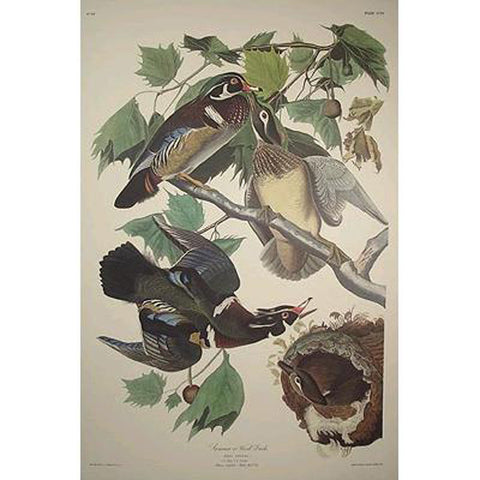Description
Wood Duck, Aix sponsa
Flora: sycamore, Platanus occidentalis, and resurrection-fern, Polypodium polypodioides
Print size: 26 1/4" x 39 1/4"; image size: 24 1/2" x 37"
Princeton Audubon Limited Edition - produced 1985
This print is based on a composition painted in Louisiana in 1821. The female in the nest was added around 1825.
Although the Wood Ducks always form their nests in the hollow of a tree," wrote Audubon, "their caresses are performed exclusively on the water, to which they resort for the purpose, even when their loves have been first proved far above the ground on a branch of some tall sycamore. While the female is depositing her eggs, the male is seen to fly swiftly past the hole in which she is hidden, erecting his crest, and sending forth his love notes, to which she never fails to respond."
One of the loveliest of all the waterfowl, the extravagantly plumaged wood duck nests in hollow trees and nesting boxes, often some distance from the ground. Soon after hatching and in response to the low soft calls from the mother on the ground below, the downy young clamber on their sharp, hooked claws to the entrance of the nest and flutter lightly to the ground.
EHJ
Princeton Audubon prints are direct-camera facsimile lithographs of the Robert Havell Jr. (1793-1878) engravings for The Birds of America (1827-38). Princeton's Double elephant Folio prints are issued in limited editions of 500 or 1500 prints. All are numbered and have a seal in the bottom margin to demonstrate their authenticity.
Printed on heavy Mohawk paper that is recommended by the Library of Congress for archives, the paper is specially toned to match the average paper color of the antique originals.
Item Number:
1725


